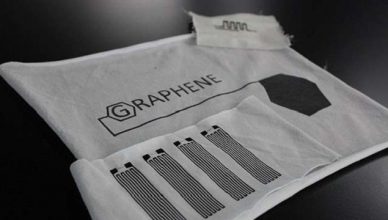Latest Posts

Graphene’s infusion in textiles is the future of wearable electronic clothing
Nanotechnology is a key tool to increase the capabilities of electronics devices while reducing their weight and thickness of the screens, and power consumption. Nanoelectronic applications can increase density memory chips or reduce the size of transistors used in integrated circuits.
For example, carbon nanotubes are used for building transistors with lower dimensions, while graphene films are used to enable very high speed for those devices.
Generally thermoplastic polymers are insulator materials with conductivity values of the order of 10-16 to 10-14 S/cm and additional fillers (e.g. metallic particles or carbon black) are needed to enhance their electrical conductivity. Recently, nanocomposites based on carbon nanostructures and thermoplastic polymers have been proposed. Electrical conductivity values of the order of semiconductors (10-10-102 S/cm) were found being suitable for their application in flexible transparent transistors, thin film loudspeakers, capacitors, solar cells, among other applications.
Graphene–conjugated polymer (CP) nanocomposites have shown potential applications in supercapacitors, photovoltaic devices, OLEDs, and biosensing devices. In addition to graphene, other 2D materials, such as metal dichalcogenide nanosheets, have recently attracted tremendous attention due to their outstanding performance in device applications.
| Application | Product or article | Improved properties | Nanomaterials |
| Electronics | Flat panel displays Transistors Magnetic Random Access Memory Ultra-high definition displays Weareables Semiconductor nanomembranes Thumb drives Ultra-responive hearing aids Antimicrobial/antibacterial coatings on keyboards and cell phone casings Conductive inks Flexible displays |
Capacitance Higher thermal resistance Higher tensile strength Higher electrical conductivity Higher strength Viscoelastic properties Power conversion efficiency Barrier properties Electromagnetic interference Reduced weight |
Carbon nanotubes Graphene Calcium carbonate Aluminium oxide Silver Quantum dots |





